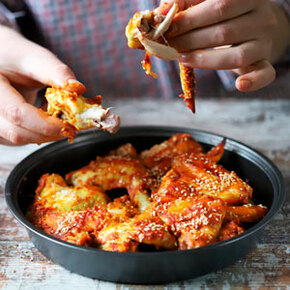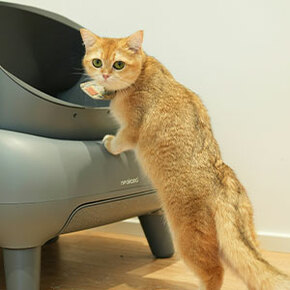
‘Upworthy Science’: 40 Good Things Happening In The World Of Science
There’s just something about positive news that helps uplift the spirits. Today we explore a popular IG page called ‘Upworthy Science’ that updates its followers on all the wonderful progress that has been occurring in the scientific world. There’s a lot to be happy and proud about, so go ahead and scroll below to find out all about the recent achievements celebrated by the global science community.
More info: Instagram | UpworthyScience.com
#1

Image source: makingsenseofscience
#2 By banning the use and new production of CFCs, the Montreal Protocol eliminated a significant contributor to climate change. It’s estimated that these efforts avoided a temperature increase of as much as 2.5 degrees. We love to see people working together to use science for the good of humanity

Image source: makingsenseofscience, What ha
#3

Image source: makingsenseofscience, weaver-z
#4

Image source: makingsenseofscience
#5

Image source: makingsenseofscience
#6

Image source: makingsenseofscience, figoreilly
#7

Image source: makingsenseofscience, gamespite
#8 This was an actual experiment carried out by researchers over a three-year period. This experiment taught scientists (and pet owners) something important: Animal rights advocates have argued for years about whether mice running on wheels in their cages is a sign of stress or neurotic behavior brought about by living in a confined space.

Image source: makingsenseofscience, MegaDarren
But as this study would indicate, there are many different species of woodland creatures that are naturally curious and seek out activities to satisfy their curiosity (and for their pure enjoyment). The study, which observed more than 200,000 animals over a three year period, confirmed that mice sought out the running wheel for fun, sometimes multiple times a day. The researcher’s cameras also caught shrews, rats, frogs, and even slugs taking a turn on the wheel as well
#9

Image source: makingsenseofscience, mhdksafa
#10 A 13-year-old girl named Alyssa has been totally cleared of a deadly, incurable cancer after doctors used a technology called “base editing” to build her a new, living medication.

Image source: makingsenseofscience
Alyssa was diagnosed with T-cell acute lymphoblastic leukemia in May of last year. With this particular type of cancer, the body’s T-cells—which are designed to fight off infections—instead mutate and multiply out of control. Despite trying chemotherapy and a bone marrow transplant, Alyssa’s cancer still persisted, and earlier this year she was given just months to live. In an amazing feat of science, however, a team of doctors and scientists were able to use an experimental new tool called “base editing” to engineer brand new T-cells—ones specially equipped to hunt and kill off Alyssa’s cancerous T-cells. After just one round of this new treatment, Alyssa has been declared cancer-free, and can now spend Christmas with her family.
#11

Image source: makingsenseofscience
#12

Image source: makingsenseofscience, HannahThomasy
#13

Image source: makingsenseofscience, murffyslurtz
#14

Image source: makingsenseofscience, KylePlantEmoji
#15 A former [illegal substance] sniffing dog named Train now helps his owner, conservation biologist Karen DeMatteo, sniff out the droppings of elusive wild animals.

Image source: makingsenseofscience
This helps DeMatteo and her research team find where endangered animals live, as well as pinpoint their habits, such as which habitats they like (and which ones they avoid). This helps determine what areas should be prioritized in conservation efforts. (What a good boi.)
#16 Billionaire entrepreneur Mark Cuban (you might have seen him on the TV show “Shark Tank”) launched an online pharmacy that is poised to change lives for the better. Cuban’s new venture, called the Mark Cuban Cost Plus Drug Company (MCCPDC), offers “huge” savings on generic prescription medication – some that retail for thousands of dollars each month.

Image source: makingsenseofscience
According to a press release from the company, MCCPDC provides medication at cost with a flat 15% margin for pharmacist fees. In this way, medication for a variety of health concerns such as cancer can be provided to consumers for just a fraction of the retail cost. Gleevac, for instance, which can cost more than $9,000 for one month’s supply, can be purchased on the MCCPDC website for just $47 – no insurance necessary. This news will no doubt come as a relief to millions of Americans who, according to a Gallup poll taken in September 2021, are unable to pay for at least one of their prescription medications due to rising costs. Here’s to Cuban, who’s doing his part to make medicine accessible to everyone.
#17 Chances are you’ve never heard of Guinea worm disease, a parasitic sickness which often causes infection, lock jaw, joint infections, and permanent disability.

Image source: makingsenseofscience
Decades ago, the disease afflicted 3.5 million people each year — but thanks to the heroic efforts of Dr. Donald Hopkins and others, there are currently just 28 cases of Guinea worm disease worldwide. Hopkins, born in Miami in 1941, grew up in poverty, the seventh of ten children. On a study-abroad trip to Egypt, Hopkins saw the devastating effects of disease on the global population and decided to pursue medicine. After graduating medical school at the University of Chicago (the only black student in his graduating class), Hopkins went on to work with the CDC to eradicate smallpox in Sierra Leone. At the time (1967) Sierra Leone had the highest smallpox rate in the world. Hopkins’ unique vaccination strategies helped Sierra Leone report their last case of smallpox just two years later. In the early 1980s, Hopkins set out to destroy another debilitating disease — Guinea worm. The disease, caused by unclean drinking water, affected millions across Africa at the time, but Hopkins was undeterred: “When people said to me, ‘You’re not going to be able to eradicate Guinea worm disease,’ I had heard all of that about smallpox. So I just brushed it off.” For decades, Hopkins (working alongside former president Jimmy Carter) has traveled across Africa and battled cultural differences, political rivalries, bad roads, and dilapidated health systems to bring clean water and larvicide to struggling populations. With just 28 cases worldwide in 2021, Hopkins and his team are on the verge of declaring victory — but the 79-year-old scientist won’t retire until the disease is completely gone: “I’ve got the tiger by the tail and I can’t let go.”
#18

Image source: makingsenseofscience, just-shower-thoughts / ericvilas
#19 You’ve probably never heard of Dr. Mary Edwards Walker, but here’s why you should: Walker was a physician, an abolitionist, a suffragist, a prisoner of war, the first female surgeon to ever serve in the US Army, and an all-around bada*s.

Image source: makingsenseofscience
When the Civil War started, Walker had already earned her medical degree, married, and started a medical practice in an era where very few women aspired to practice medicine at all. After the war broke out, Walker tried to enlist as a soldier and was rejected. Instead, the Union Army hired her as a surgeon where she treated the wounded in battle and across enemy lines. At one point, Walker was arrested as a spy and taken prisoner by the Confederacy. Thankfully, Walker was soon released and received the Medal of Honor for her heroism and service to the Union. Walker is the only woman (still!) to have received the medal of honor and one of only eight civilians who have received it to this day.
After the war, Walker retired from her medical practice due to a war injury and became a writer, supporting issues like health care and women’s suffrage.
Another bada*s quality that Walker had? She wore whatever she wanted—namely, men’s attire such as a top hat and trousers, which was scandalous at the time. When confronted about her unusual dressing habits, Walker is said to have responded, “I don’t wear men’s clothes—I wear MY clothes.” Walker died in 1919 at the age of 86—one year before American women earned the right to vote.
#20

Image source: makingsenseofscience
#21

Image source: makingsenseofscience, BradMossEsq
#22

Image source: makingsenseofscience
#23 When Hadiyah-Nicole Green was in her early twenties, she received some news that would change her life forever: Her aunt (pictured here), who had raised her since the age of four, had terminal cancer.

Image source: makingsenseofscience
Fearing the effects of chemo and radiation, her aunt chose instead to die without treatment. Three months after her aunt’s death, her uncle was diagnosed with cancer as well – and though he chose to undergo treatment, the chemotherapy and radiation made him seriously ill and were ultimately ineffective. He died less than a year later. Though losing her aunt and uncle was devastating, Green decided she would dedicate her life to fighting cancer in their memory – and also to make cancer treatments with less side effects. Green got a master’s degree and then a PhD in physics, and turned her interest to lasers. She theorized that lasers could be use to precisely kill cancer cells while leaving the healthier cells intact. She spent the next three years developing a laser technology that uses nanoparticles to destroy cancer cells. Green’s persistence paid off: she soon became the first person to use nanoparticles to cure cancer in mice, with no observable side effects. Her ultimate goal is to make this treatment available to human beings. Green is now hard at work trying to bring her technology to human trials. To that end, she has established the Ora Lee Smith Cancer Research Foundation (named after her late aunt), a non-profit to support her cancer research. Once her treatment is developed, Green wants to provide the treatment through her non-profit organization rather than sell it to a pharmaceutical company, enabling it to be affordable and accessible to everyone.
#24

Image source: makingsenseofscience
#25

Image source: makingsenseofscience, jmccarty_geo
#26

Image source: makingsenseofscience
#27

Image source: makingsenseofscience
#28

Image source: makingsenseofscience
#29

Image source: makingsenseofscience, bencichy
#30

Image source: makingsenseofscience
#31

Image source: makingsenseofscience, MariahCarey
#32

Image source: makingsenseofscience, mcnees
#33

Image source: makingsenseofscience, upworthyscience
#34

Image source: makingsenseofscience, RitaJKing
#35

Image source: makingsenseofscience, MathnSkating
#36

Image source: makingsenseofscience, kristaaaaaaa_
#37 An eight-year-old girl named Xochitl Guadalupe Cruz is saving the environment and helping low-income families in her village, all at the same time. Alongside her father, Cruz wanted to find a way to lessen her community’s reliance on cutting down trees for firewood.

Image source: makingsenseofscience
Hot water, however, is a necessity, Cruz said in a video. “In San Cristobal, it’s very cold most of the year. If people shower with cold water they can get sick with respiratory illnesses and have to go to the doctor.” So Cruz made a heater from recycled objects like black bottles, black nylon, and recycled glass. When the water is filtered into the heater, it can warm ten liters of water to anywhere between 95 and 115 degrees, even in cold weather. At age nine, Cruz won the Instituto de Ciencia Nuclear de Universidad Nacional Autonomy de Mexico (ICN-UNAM) Women’s Recognition Award, making her the first child to ever do so. She’s now planning to build a larger water heater for even more neighbors to use.
#38

Image source: makingsenseofscience
#39 TIL Mary Somerville was a total bada*s and a polymath—meaning she had expertise on several different kinds of subjects in the sciences. Throughout her life she studied and wrote books on mathematics, astronomy, chemistry, geography, and more.

Image source: makingsenseofscience, upworthyscience
Sommerville even served as a math tutor to Ada Lovelace, who went on to be known as the first-ever computer programmer. Sommerville also spoke Greek, Latin, and French, played the piano, spoke out in favor of women’s rights to vote, and had four children. Just incredible.
#40 An incredible technology designed for a bakery is now helping doctors distinguish cancerous cells from normal cells. Here’s the story: About fifteen years ago, market research for Japanese bakeries determined that the more variety of pastries bakeries have, the more they sell.

Image source: makingsenseofscience
Also, customers prefer them unwrapped. (Wrapped = preserved and unwrapped = fresh.) No packaging, however, means no barcodes to scan, which is a logistical nightmare for cashiers. Given this research, one bakery chain owner approached an engineering team in 2007 and asked for a system to automate the checkout process so they could easily sell pastries without barcodes. It took them five years – but they did it! The team developed a highly specialized AI (called BakeryScan) that can look at a pile of pastries and ID everything, tally it up, and charge the customer correctly. In 2017, a doctor saw an ad for this bakery scanning system. It occurred to him that cells under a microscope don’t look all that different from loaves of bread. And if you have a system that can differentiate a donut from a croissant – couldn’t you program it to tell the difference between normal cells and cancer cells? (Spoiler: yes, you can!)


















Got wisdom to pour?